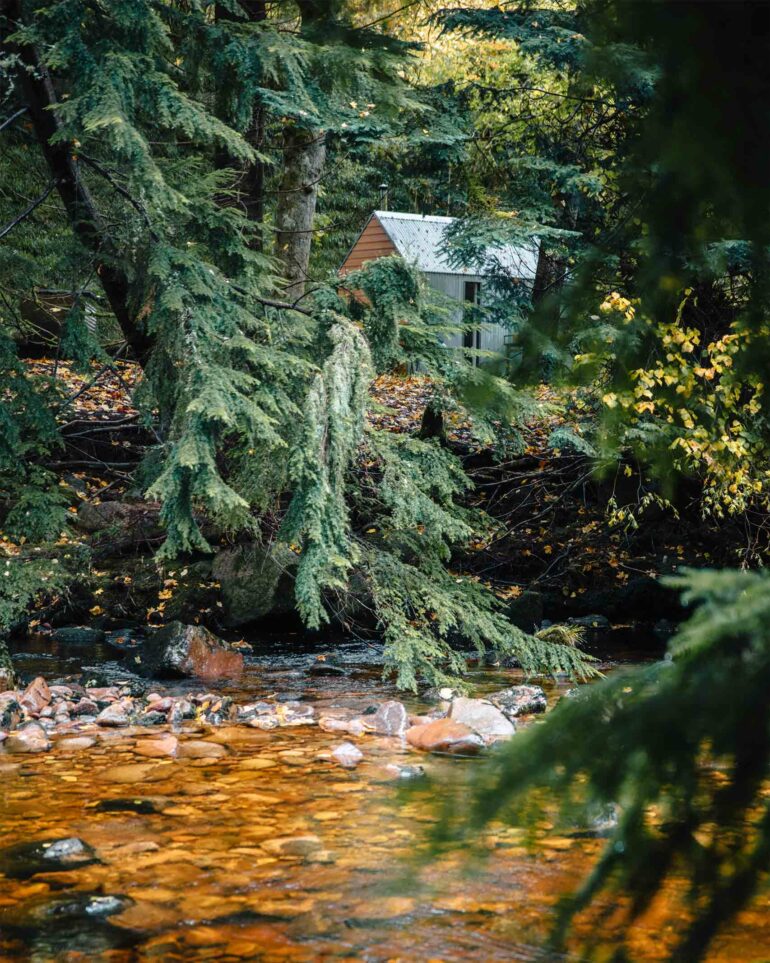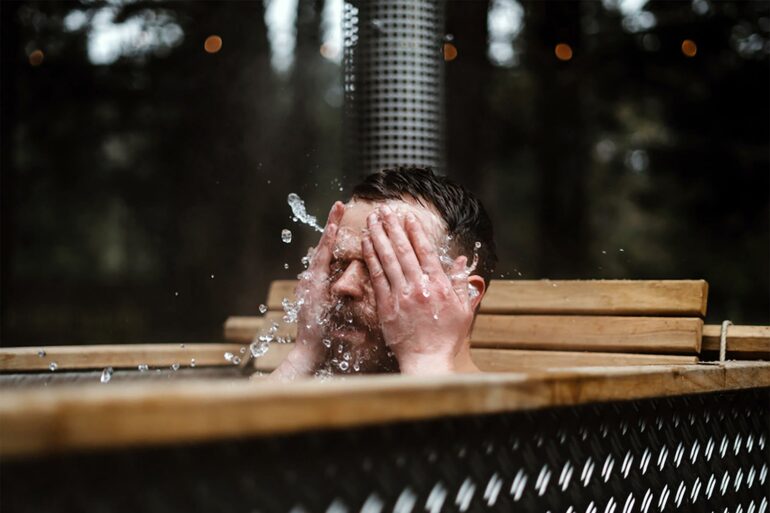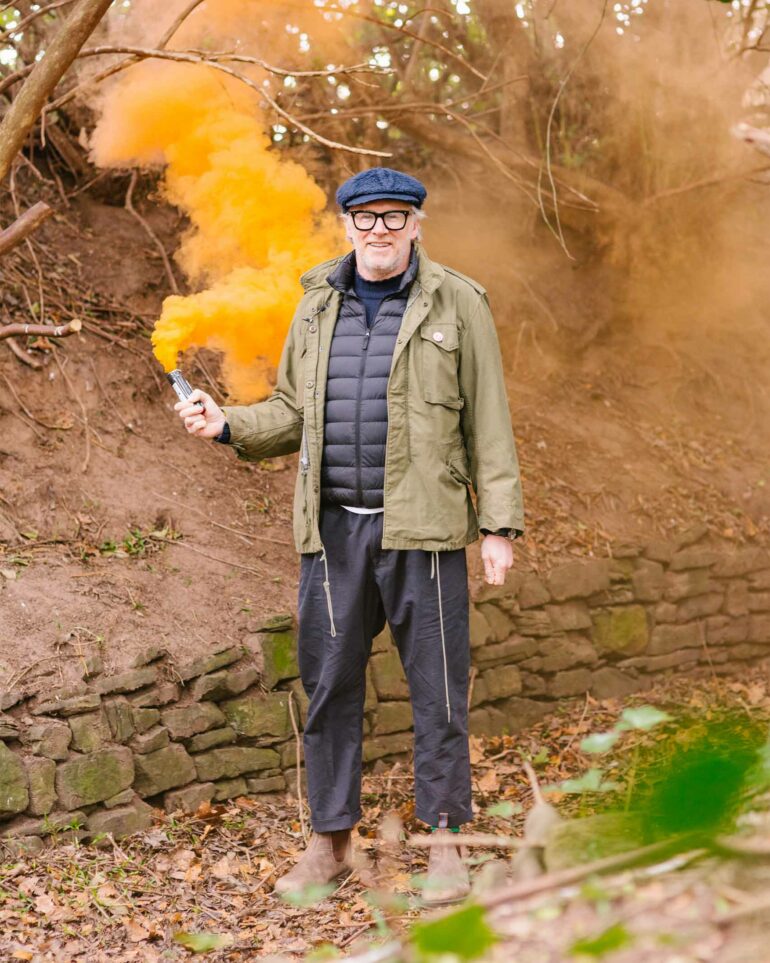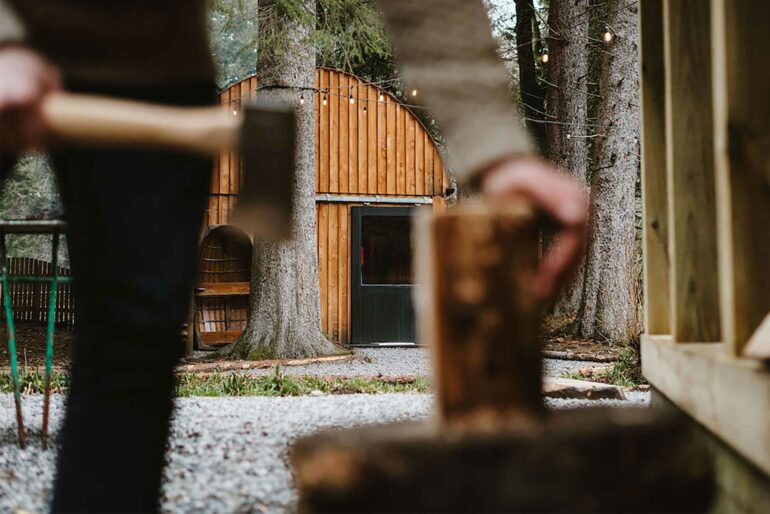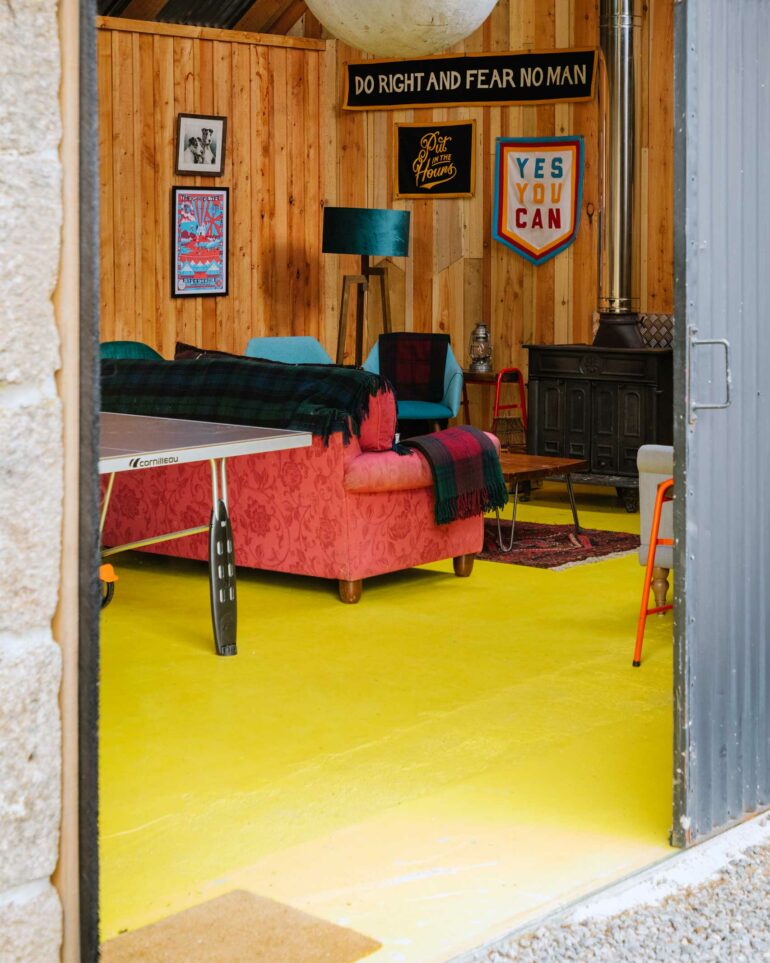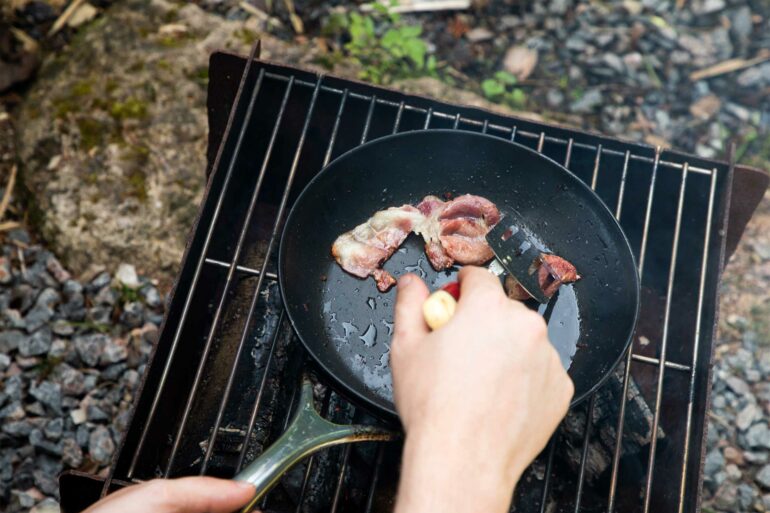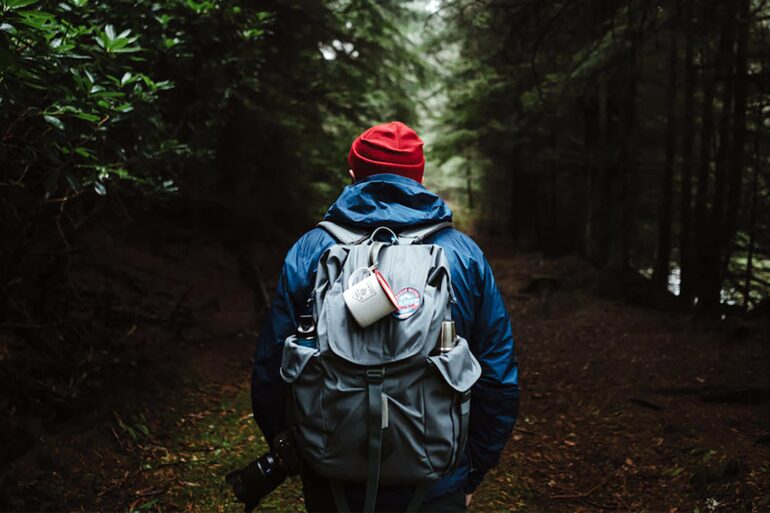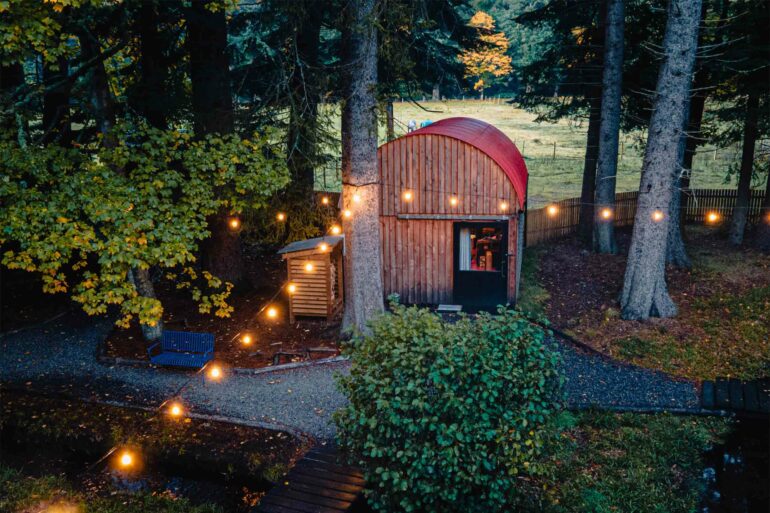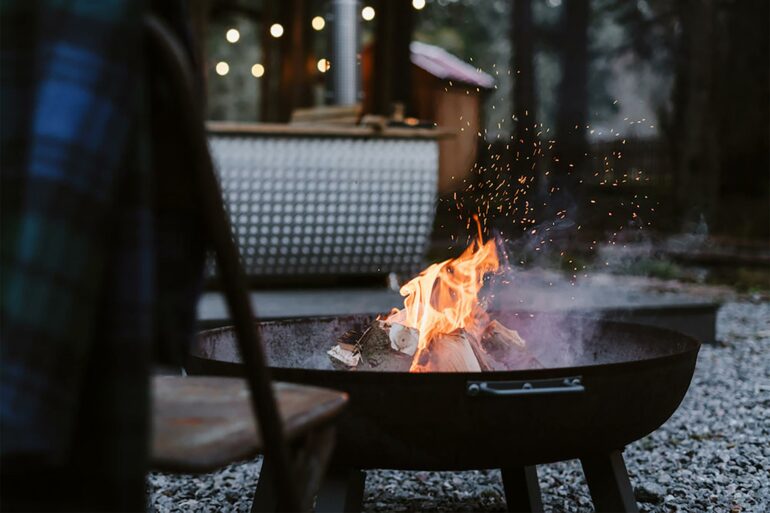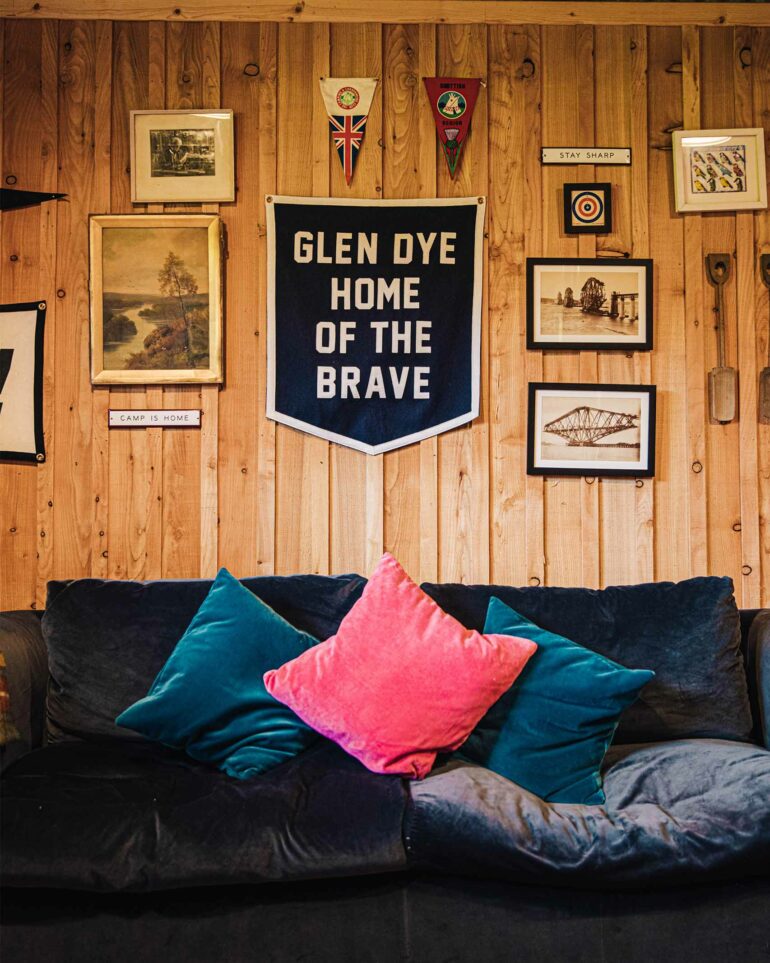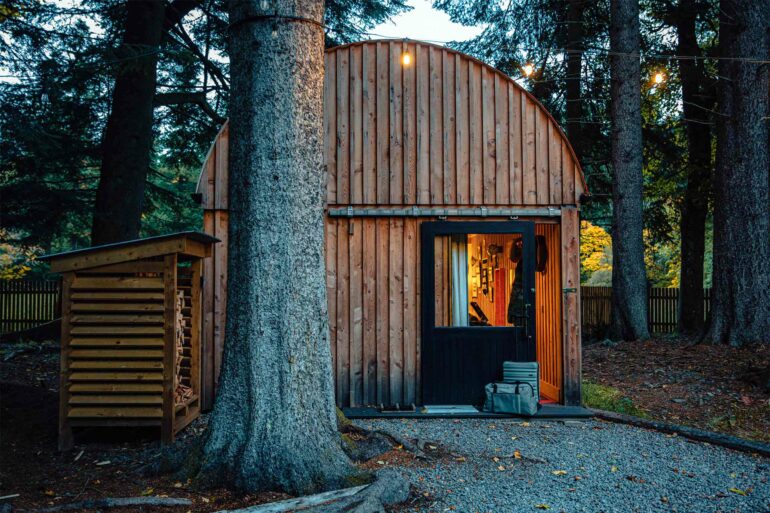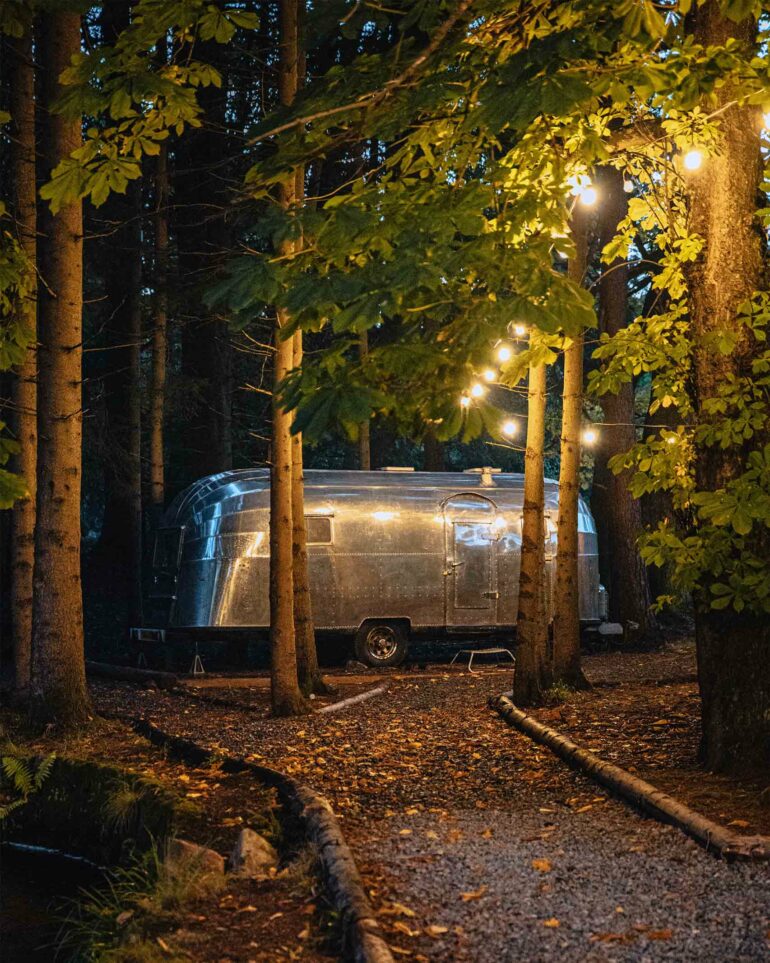Design-led hospitality offerings are popping up weekly in Scotland, attracting a real following. At off-grid accommodation experiences like these, the environment is artfully curated so guests escape the humdrum of their daily routine. Scottish hotels, as we find out, are having a real makeover moment.
There’s often a stark contrast in my work as a creative person in Scotland. From my co-shared studio in the heart of rough-around-the-edges Leith, where designers, entrepreneurs and artists cultivate the freshest, blue-sky ideas, I venture on travel assignments swathed in tradition that couldn’t be further from the contemporary Scotland I know and love. It almost feels like our Leith community is a guerrilla movement, waiting for the right time to pounce and change the mainstream into a vision that we feel represents the real Scotland and her people.
What do I mean by the ‘real Scotland’? Well, if you live here, you’ll know that tartan, whisky, stag portraits and castles aren’t the lifeblood of the community. In fact, I’m sure if you asked anyone under 40 in Scotland, they’d agree that this facade is something that has been exaggerated for tourists. And, of course, that’s okay — it sells. However, particularly with everything that has happened of late and with the once, lesser-spotted home-grown, domestic traveller back in the country, things are changing – there’s been a welcome evolution in the country-house B&Bs, tweed-waistcoat-clad doormen and soul-less loch-side cabins.
After all, Scotland has the largest population of young entrepreneurs in Europe, the biggest independent arts festival in the world and a design scene that rivals that of our Scandinavian neighbours. Yet, I didn’t feel this permeated the hospitality industry. At least, it didn’t until a couple of years ago.
Spearheading the way as the creative community’s personal Braveheart, Glen Dye Cabins and Cottages seemed to pop up out of nowhere, but was immediately at home because it aligned with the values and aspirations of a new generation of domestic traveller. Nestled in the woods on the River Dye, skirting Her Majesty the Queen’s Balmoral Estate, Glen Dye could have easily succumbed to the tartan hex but, thankfully, they resisted.
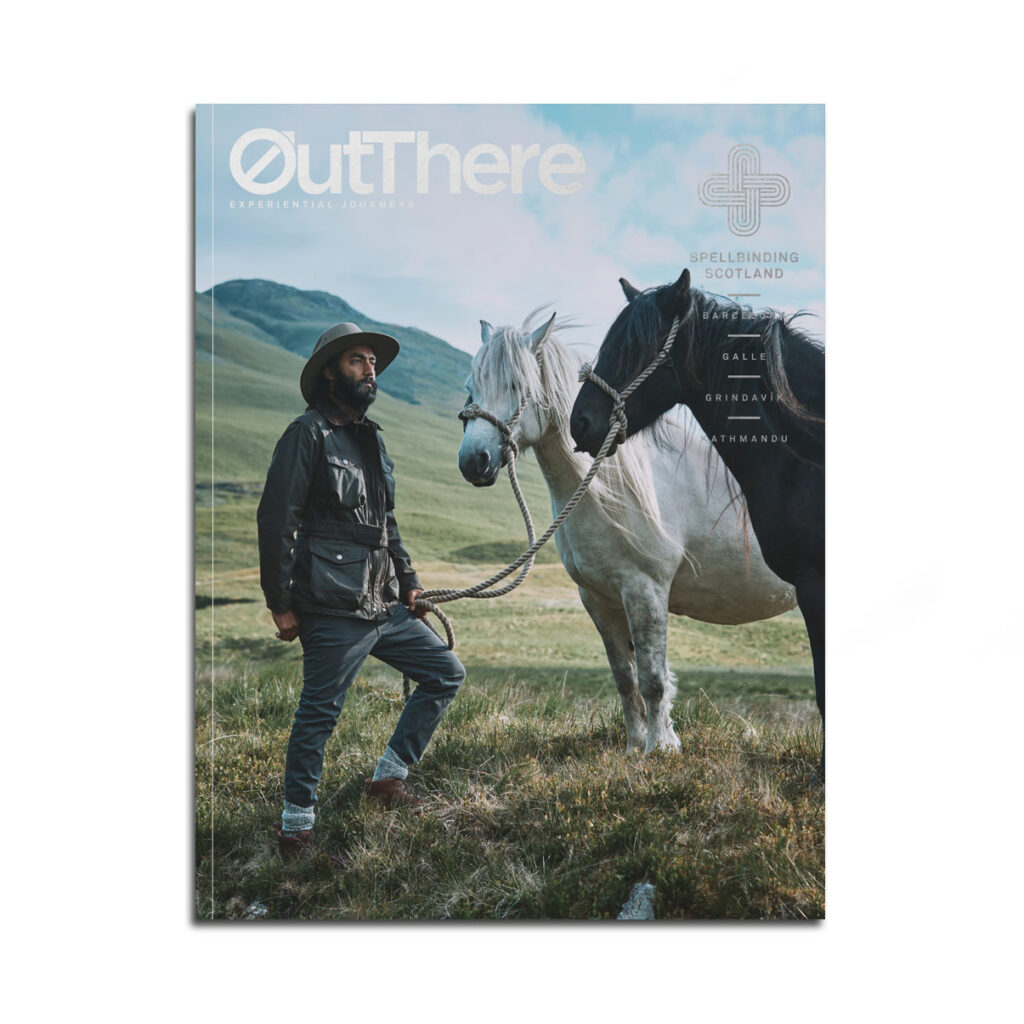
This story first appeared in The Spellbinding Scotland Issue, available in print and digital.
Subscribe today or purchase a back copy via our online shop.
“You can pay attention to provenance without being cliché,” says company founder Charlie Gladstone. “There are so many great Scottish designers and we thought there was a gap in accommodation experiences in Scotland fuelled by great design, electric colours and contemporary art forms.”
I wholly agree with Charlie. As someone who lives in Scotland, I’m proud of the country’s provenance, but I believe that can come in all forms. This renaissance in design-led culture is, in my opinion, directly linked to the surge in creative entrepreneurs peppering our cities. There’s a confidence, a daring side to Scotland’s entrepreneurial eco-system – simple ideas, delivered with flair and not overcomplicated or pretentious. We avoided the cereal cafés and themed hotels that go hand in hand with hipster culture and, instead, took everything that we love about our bonnie land and repackaged it into something all the more appealing.
“If you’re a creative entrepreneur, you have to want to live and breathe your product in order for it to have direction,” adds Charlie. “That’s why independent businesses in Scotland thrive, particularly in hospitality.”
He’s right – there was a gap that now is being filled and there’s an unstoppable boom. As with any brand that garners such popularity, a design-led hospitality offering does so through connection with its ideal consumer. They are people-first brands, bucking the trend of a long-lasting pandemic in the industry — one of keeping a formula of traditional nuances the same because it worked in the past.
New spaces, such as Glen Dye, Inverlonan and 57 Nord, value contemporary notions of hospitality – that yearning to go off-grid, to forage for food, cook on open fires beneath the night sky, to wild-swim despite the risk of frostbite, to escape the humdrum of daily life – and to do it all in an eclectic manner.
“I cannot imagine Scotland forever being rooted in paintings of stags, tartan and whisky,” muses Charlie. “We need hospitality that represents the Scottish people — the way we are now, the way we’re evolving. And we need the tourism bodies to see us and give us the spotlight. It would be much more interesting for inbound travellers.”
Additionally, the move towards eating, making, connecting and creating that this new breed of places to stay is taking, rather than just providing plump pillows for a good night’s rest, creates a sensory experience for their guests, a lifestyle the traveller buys into, connecting with it on more than a surface level.
I felt this firsthand at Glen Dye, where the dwellings are designed for remote and personal experiences with nature and self. Old, traditional buildings are adorned with quirky vintage-market finds, carefully curated in order to tell the provenance story in a new and interesting way.
Brands in the Scottish hospitality industry that start to adopt this approach, celebrating the wild outdoors, care-free mannerisms and strong character and provenance of Scotland, will undoubtedly future-proof themselves in the process. Creating a welcoming space, founded on liberal ideas, with diversity as the focus will attract a new type of traveller to this country.
“We have the opportunity in Scotland to lead with our people, with their bright new ideas and passions,” says Charlie. “If we do so, we’ll become world leaders in hospitality, without the need to lean on the golf or whisky industries.”
The slogan for Glasgow has long been ‘People Make Glasgow’, but, in truth, people make Scotland. I feel the time has come where we’re looking inward at what we have to build, so we can flourish in a future that is new, exciting and unknown.
www.glendyecabinsandcottages.com
Photography by Hollie Harmsworth and courtesy of Glen Dye


